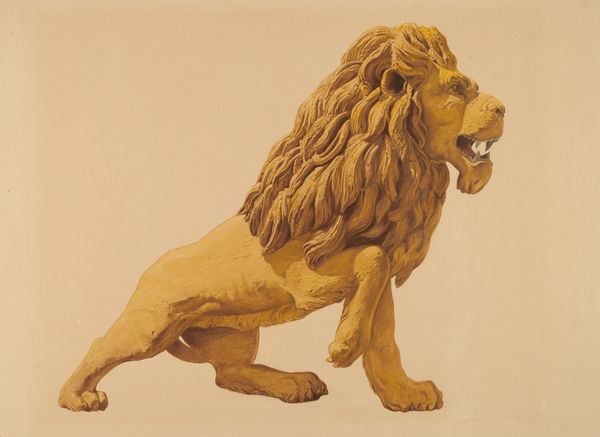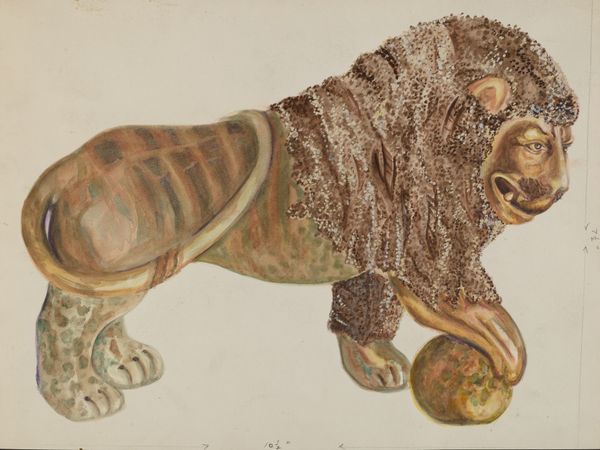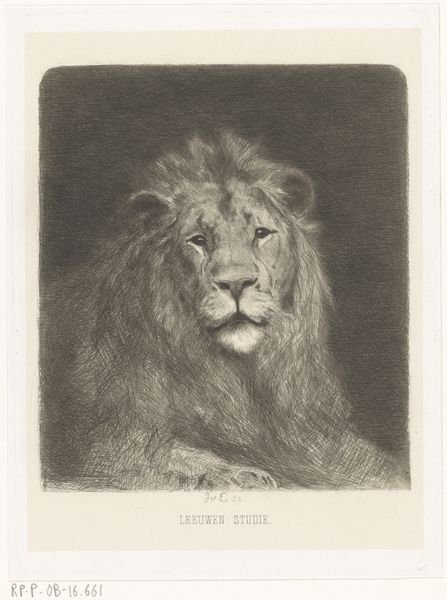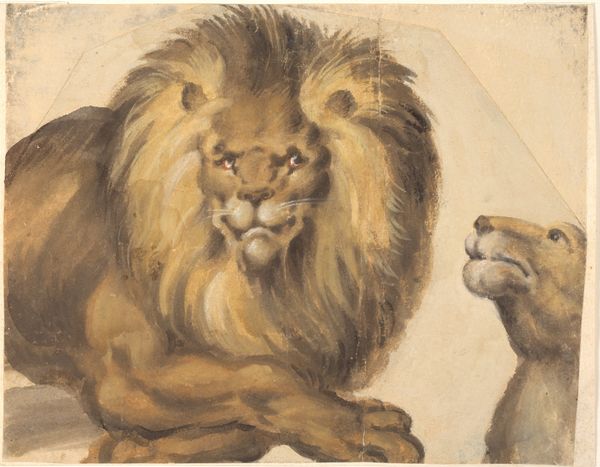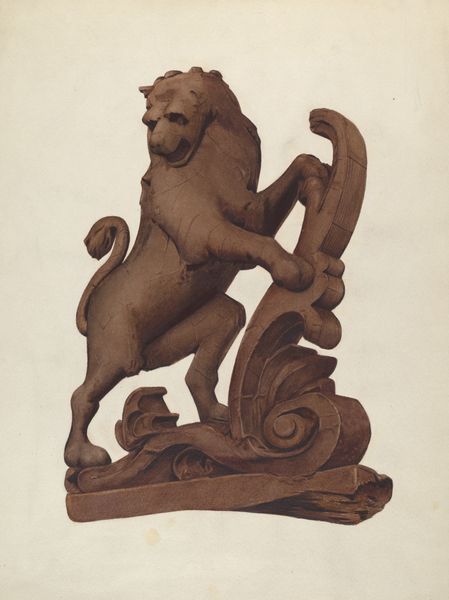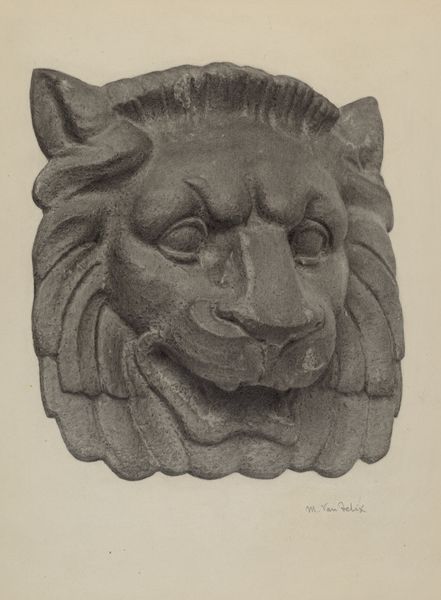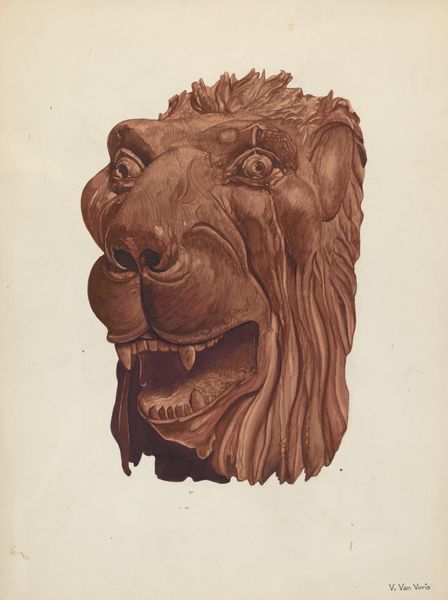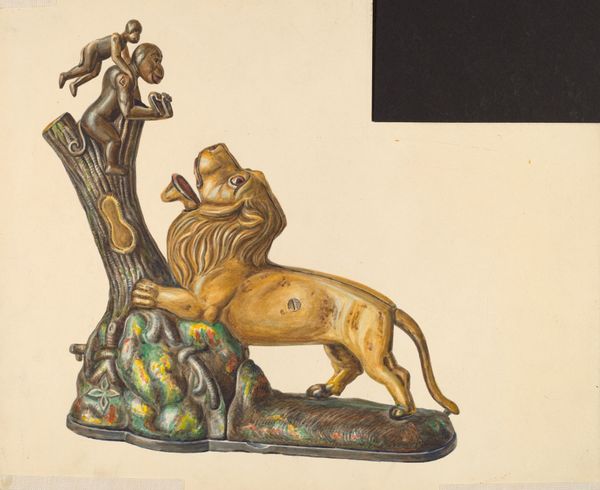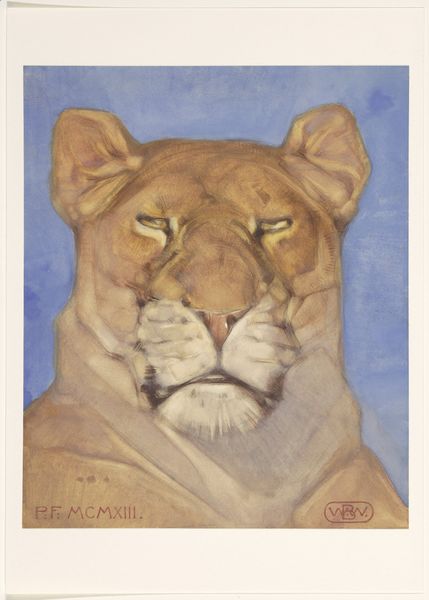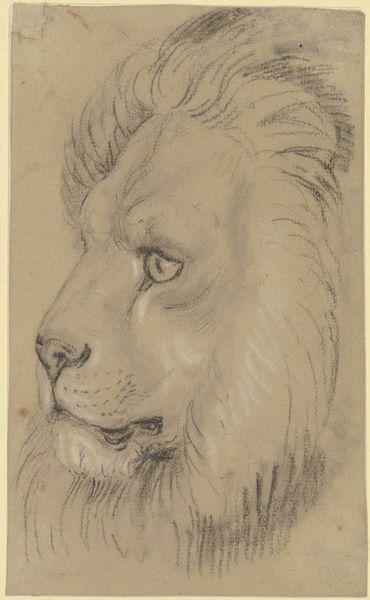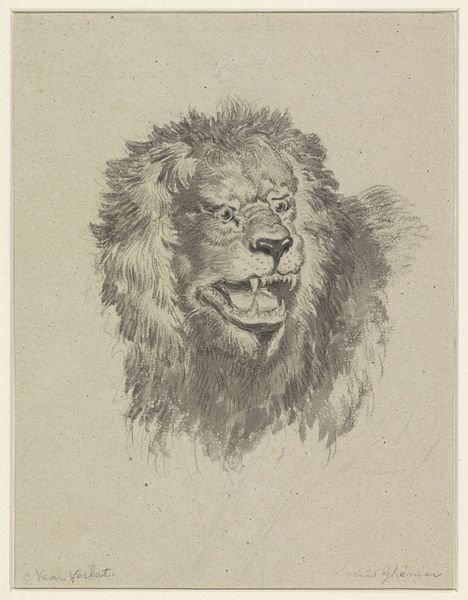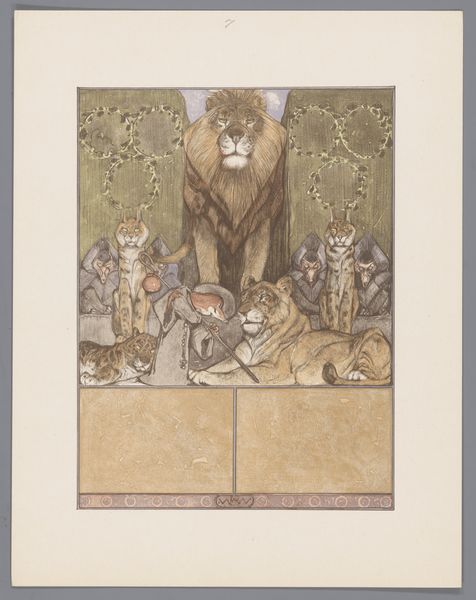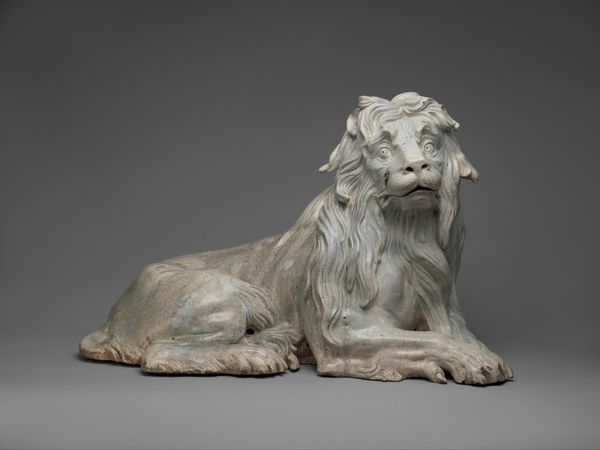
drawing, watercolor
#
portrait
#
drawing
#
figuration
#
watercolor
#
animal drawing portrait
#
portrait drawing
#
watercolour illustration
#
watercolor
Dimensions: overall: 47.9 x 33 cm (18 7/8 x 13 in.) Original IAD Object: 30" high; 15" wide
Copyright: National Gallery of Art: CC0 1.0
Curator: This watercolor drawing from around 1939 is titled "Lion," and it's signed by Katharine Merrill. Editor: It’s a strikingly melancholic piece. The muted blues and browns give this lion an almost sorrowful appearance, as if the king of beasts has been weathered by time and tide. Curator: Absolutely. It's interesting how Merrill depicts a carved, inanimate lion. The statue-like quality invites questions about the lion's symbolic role in public spaces. Was it meant to project power, or perhaps stoicism during the depression era? Editor: That material aspect is key! Look at the rust tones running throughout. It’s a powerful comment through the deliberate application of paint—layer upon layer creating this decayed, worn texture. Is Merrill subtly highlighting the impermanence of power and grand architectural statements, the inevitable decay of materials? Curator: Possibly. Public art served different purposes, and lions especially could symbolize British imperialism. It raises questions about what Merrill, as a woman artist, may have been trying to subvert. Was she questioning these symbols of authority during a period of immense societal change? Editor: And notice that truncated form on the left side – what's cut off? It calls attention to the physical object's fragmentation. The process of rendering the material is front and center. Curator: Right. It makes me think about the way artists depicted symbols of authority at the time, and how art institutions promoted certain images over others. The New Deal initiatives were meant to portray strength but often revealed the vulnerabilities of a nation. Editor: Well, thinking about the lion as an object, meticulously rendered in watercolor, adds another layer. Merrill transforms a monument, typically carved and imposing, into something delicate, a study in the process of degradation. It humanizes, or rather, deconstructs, the icon. Curator: Yes, in this light, Merrill’s “Lion” seems less a celebration of strength and more a meditation on its fragility. Editor: A powerful rendering with incredibly deft use of material; one which prompts me to think about labor, process and time.
Comments
No comments
Be the first to comment and join the conversation on the ultimate creative platform.
